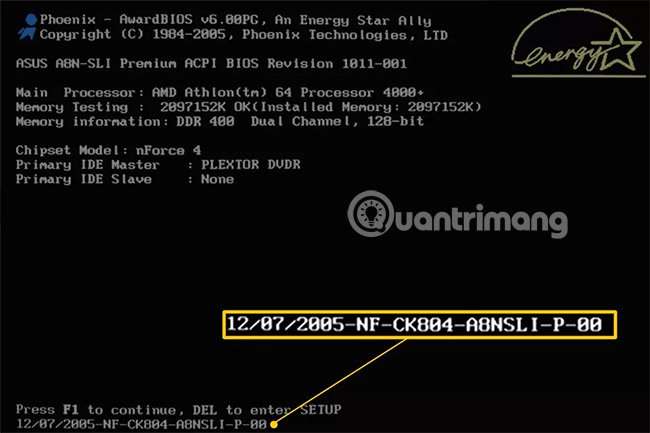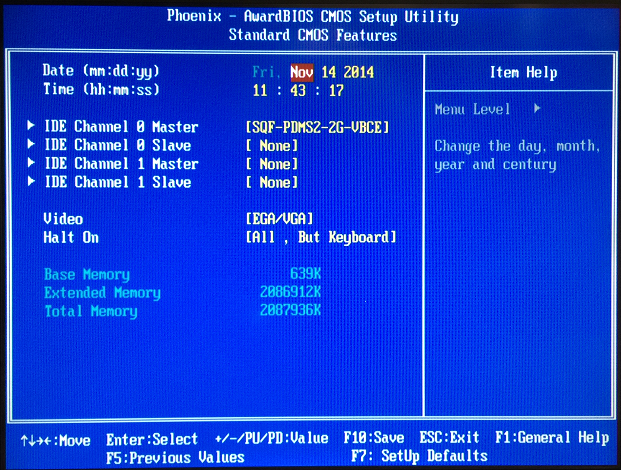
- #PHOENIX AWARDBIOS CMOS SETUP UTILITY FOR WINDOWS 7 HOW TO#
- #PHOENIX AWARDBIOS CMOS SETUP UTILITY FOR WINDOWS 7 INSTALL#
Due to the amount of available illustrations for each of the difference screens, we created the below menu to help skip to the desired section. This section enables you to access each of the other sections of the BIOS. Main screenīelow is an example of the main screen of the Phoenix - Award CMOS setup.

Options are subject to change based on the manufacture date of the BIOS, the version, and the manufacturer of the computer or motherboard. Below are example illustrations of the Phoenix - Award BIOS and a brief description about each of the categories. The Phoenix - Award BIOS has numerous available options displayed to help customize and optimize your computer. Finally, once the values are changed pressing F10 saves the values and exits the CMOS setup. To change the values, press + or -, PgUp or PgDn, or Enter. Navigating the Phoenix - Utilizing the arrow keys, a user can move between the available options on the screen. Like most computers using the Phoenix BIOS setup, each section of the Phoenix BIOS is broken into multiple pages to offer more options and make information easier to locate. Users must Save and Exit to keep values.Processor: Intel(R) Core(TM) i7-3770 CPU 3.40GHz, Intel64 Family 6 Model 58 Stepping 9, CPU Count: 8 Tech Support Guy System Info Utility version 1.0.0.9 Should I change to "AHCI" and move away from the "ATA" setting or not I have not seen anyone saying that they have found they system showing "ATA" setting existing instead of "IDE". I do not currently have a SSD internally but have used a SDD as an external storage device with a StarTech external HUB adaptor. It does have a setting box for change to "AHCI" however. Looking in BIOS under SATA settings it shows my system is set to "ATA". I am running a Dell Inspiron 9010 Win10 with a 2TB internal SATA drive. If there is a device containing “AHCI” in its name as in our case, it means that AHCI mode is used in this computer.Open the section “IDE ATA/ATAPI controllers”.

It can be checked in several ways: Method One It is quite possible that AHCI mode is already enabled in your PC.
#PHOENIX AWARDBIOS CMOS SETUP UTILITY FOR WINDOWS 7 HOW TO#
How to Find out Which Mode the Computer’s Controller is Using?
#PHOENIX AWARDBIOS CMOS SETUP UTILITY FOR WINDOWS 7 INSTALL#
Remember that you can’t install an operating system on an SSD in IDE mode – it requires AHCI to be enabled. In this way, computer manufacturers are trying to avoid possible problems with compatibility of hardware and software.Īnother important difference between IDE and AHCI concerns working with SSDs. Without kowing it, many users will feel no difference.

On the other hand, any SATA disk can work in IDE mode. That is, if you connect a disk with Windows XP to the system with AHCI-enabled controllers, you will run into a BSOD error (“the blue screen of death”). The matter is that operation of disk controllers in AHCI mode is supported in operating systems beginning with Windows Vista. Many people can ask quite a logical question: why have IDE mode for a SATA disk, if AHCI mode is natural for it enabling this SATA disk to completely realize its potential? Moreover, many motherboard manufacturers supply products with a default option to support PATA compatibility mode – IDE.


 0 kommentar(er)
0 kommentar(er)
